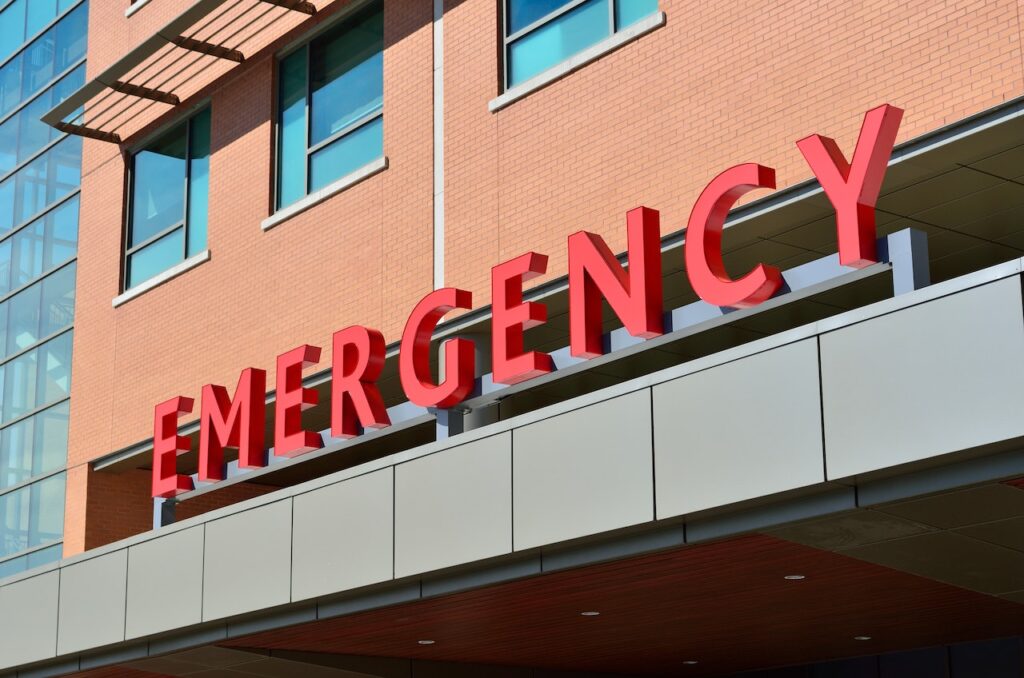The Big Business of Sick People.
Five years ago, a colleague was vacationing in Europe when he contracted a virus that landed him in a London hospital for a week.
After finally being discharged, he and his wife roamed the corridors awhile before a nurse asked if they were lost. After telling her they didn’t know where to pay the bill, the nurse laughed and explained, “You don’t owe anything, love.”
They were understandably confused. Americans have been conditioned to expect to pay inordinate amounts for even the most basic healthcare provisions.
With an average one-day hospital cost of $2,883 in the U.S., had he not been across the pond, his week-long stay could’ve cost $20k.
Only in America
In 2.5 years, America’s healthcare spending will be double the entire GDP of the U.K. It’s largely why ~650k Americans are pushed into medical bankruptcy each year, accounting for 60% of all personal bankruptcies.
Fun fact: Medical bankruptcy doesn’t exist in any other developed nation.
We’re not going to get into how America’s broken healthcare system can be fixed (though trying lobbyists and CEOs for high treason is appealing).
But let’s clarify something before getting to this week’s investment opportunity: Regardless of the easily-debunked lies windbags like Tucker Carlson disseminate simply to keep ratings high, single-payer healthcare isn’t going to turn our country into Venezuela.
In fact, not only does it cost citizens of developed countries offering universal healthcare less in taxes than Americans pay in insurance premiums, residents in those nations live longer, healthier lives.
They pay 40% less for better healthcare and better quality of living, which is increasingly evident in life expectancy statistics. We’re paying far more to live significantly shorter, unhealthier lives.
And it’s no longer attributed to the pandemic. Despite drastically reduced COVID-related deaths, life expectancy continues to decline because of poor access to healthcare or prohibitively expensive treatment.
In countries where universal healthcare is provided, like expectancy is shockingly higher. On average, women in Japan live to 88, 86 in Switzerland and 85 in Norway. In the U.S., 79.
In Monaco, which boasts one of the best public healthcare systems in the world, men (84) outlive American counterparts (73) by a whopping 11 years.
And no, having universal coverage doesn’t mean you have to wait months to see a doctor. That’s textbook propaganda, and sadly, it works.
Citizens of Canada, England, Germany, Scandinavia, Israel, Australia and just about every other developed nation on Earth offering universal healthcare have greater and faster access to medical care than we do in America.
Nonetheless, we’re stuck with an inferior system because a large swath of this country can’t differentiate between Cuba and Denmark.
To quote Kurt Vonnegut … so it goes. But like the military-industrial complex, the housing crisis and the climate and insurance crises, America’s healthcare crisis is an investable opportunity.
America’s Medical Racket
No matter what you think of American healthcare, the companies controlling it thrive regardless of macroeconomic conditions.
Similar to energy and consumer staples, healthcare’s a need, not a want. Inasmuch, it’s largely insulated from changes in consumer spending habits and is capable of seamlessly passing along cost increases during inflationary periods.
Those sectors — and the companies operating within them — provide essentials to people willing to pay whatever they must in order to procure those goods and services. That’s why Americans pay the most in the developed world for healthcare:
- If you’re pregnant, delivery’s going to cost $18,865.
- Need open-heart surgery? That’ll be $57,125.
- Oncology’s the worst of all. Cancer treatment averages $150k.
“Well, I have insurance. I won’t pay that much.”
True, unless you’re one of 30 million uninsured Americans. But even if you do have insurance, somebody’s footing the bill. And it’s important to know who’s collecting it.
Taking Stock of Hospitals
Healthcare’s BIG business in the U.S. Expenditures are projected to grow to $6.2 trillion by 2027, and one company in particular sees outsized profits from that spending.
When HCA Healthcare (HCA) filed its IPO in 1969, it owned and operated 11 hospitals. However, shortly after going public, the company’s focus shifted from patient care to provider consolidation.
Today, it owns 210 hospitals and 2,000 outpatient sites — including surgery centers, freestanding emergency rooms, urgent care centers and physician clinics — in 21 states and the U.K.
Its growth isn’t strictly attributed to mergers and acquisitions, either. HCA recently announced plans for three new hospitals in Florida and five in Texas.
The company’s market cap is $71.22 billion, making it the largest health system in America.
Caption: Five-year gain for HCA (blue line) compared to the S&P 500 (orange line).
Since the pandemic arrived in March 2020, shares are up 234%, with a 26% gain over the past year. The stock pays a dividend yielding 0.92% annually, or 60 cents/share.
The Wall Street Journal gives HCA a median one-year price target of $323. At a current share price of $262, that’s 23% upside potential.
Despite its elevated share price, HCA’s trading at an absurdly cheap price-to-earnings ratio of 13.1. Not bad for a company that generated $15.86 billion of revenue in Q2 alone, $13.38 billion of which was gross profit.
And for fans of technical analysis, the stock’s currently testing support (horizontal blue line in the chart above). If it’s able to bounce from that area, it could present an ideal entry.
TL;DR
Healthcare in the U.S. is a consolidated racket, with Americans paying 40% more than citizens of other developed nations. Average life expectancy in the U.S. is significantly lower than our peers. But with runaway medical costs come investment opportunities in industry-dominating companies like HCA. Conduct your own due diligence but consider the role healthcare stocks can play in your portfolio.


2 Responses